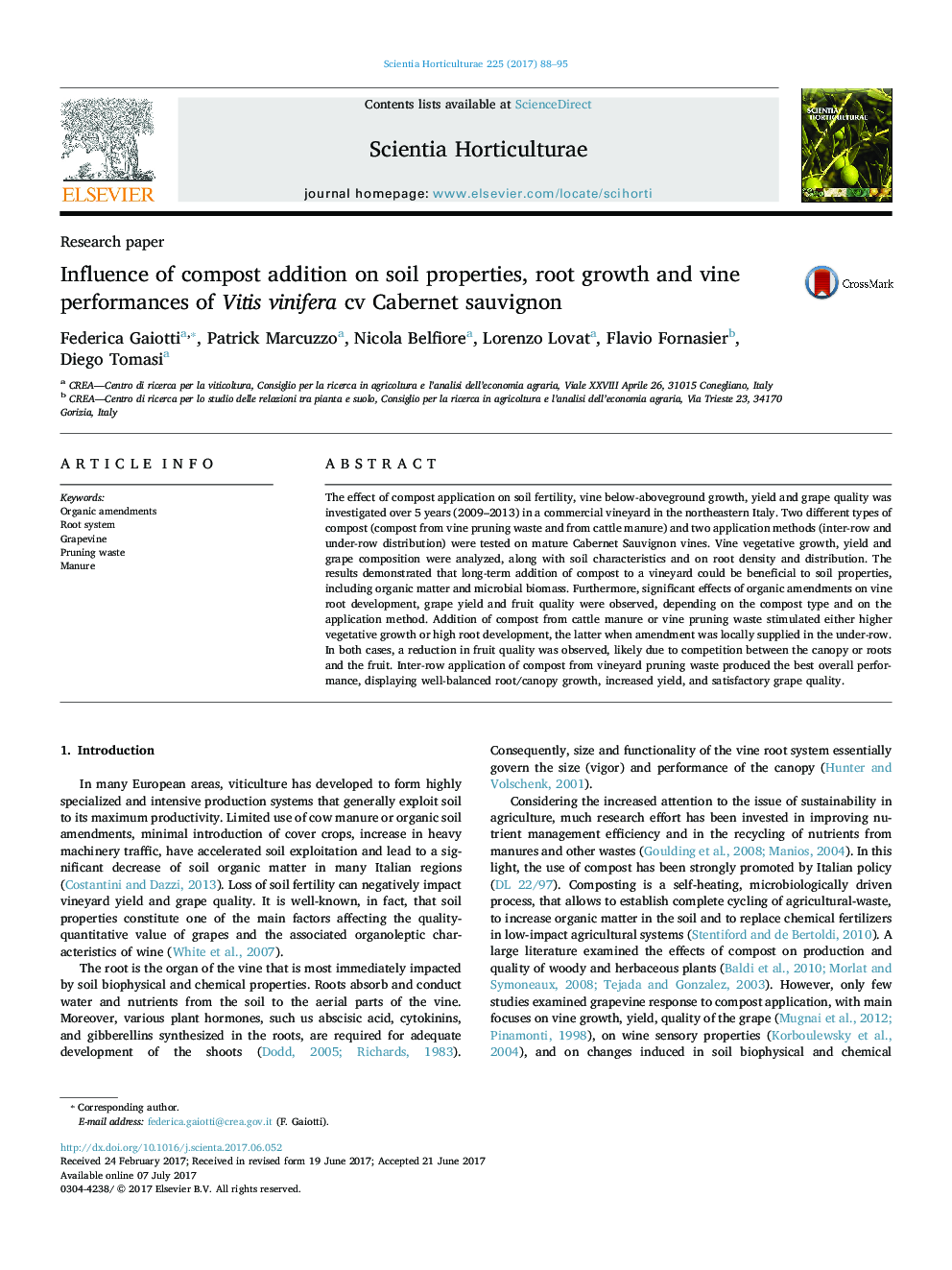| Article ID | Journal | Published Year | Pages | File Type |
|---|---|---|---|---|
| 5769243 | Scientia Horticulturae | 2017 | 8 Pages |
â¢The effect of long-term addition of two types of compost to a vineyard was investigated over 5 years.â¢Compost application had significant effects on soil properties, vine root development, yield and fruit quality.â¢Inter-row application of compost from vineyard pruning waste produced the best overall vine performance.â¢More efficient nutrient management practices should consider the type of amendment and the application method.
The effect of compost application on soil fertility, vine below-aboveground growth, yield and grape quality was investigated over 5 years (2009-2013) in a commercial vineyard in the northeastern Italy. Two different types of compost (compost from vine pruning waste and from cattle manure) and two application methods (inter-row and under-row distribution) were tested on mature Cabernet Sauvignon vines. Vine vegetative growth, yield and grape composition were analyzed, along with soil characteristics and on root density and distribution. The results demonstrated that long-term addition of compost to a vineyard could be beneficial to soil properties, including organic matter and microbial biomass. Furthermore, significant effects of organic amendments on vine root development, grape yield and fruit quality were observed, depending on the compost type and on the application method. Addition of compost from cattle manure or vine pruning waste stimulated either higher vegetative growth or high root development, the latter when amendment was locally supplied in the under-row. In both cases, a reduction in fruit quality was observed, likely due to competition between the canopy or roots and the fruit. Inter-row application of compost from vineyard pruning waste produced the best overall performance, displaying well-balanced root/canopy growth, increased yield, and satisfactory grape quality.
